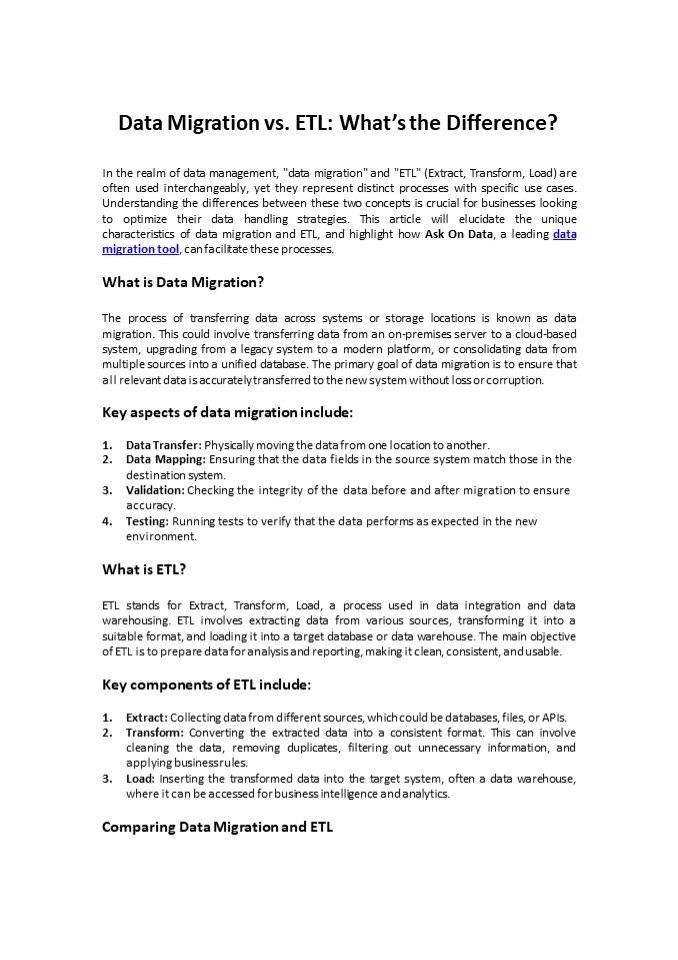Data Migration vs. ETL: What’s the Difference? PowerPoint PPT Presentation
Title: Data Migration vs. ETL: What’s the Difference?
1
Data Migration vs. ETL Whats the Difference?
- In the realm of data management, "data migration"
and "ETL" (Extract, Transform, Load) are often
used interchangeably, yet they represent distinct
processes with specific use cases. Understanding
the differences between these two concepts is
crucial for businesses looking to optimize their
data handling strategies. This article will
elucidate the unique characteristics of data
migration and ETL, and highlight how Ask On Data,
a leading data migration tool, can facilitate
these processes. - What is Data Migration?
- The process of transferring data across systems
or storage locations is known as data migration.
This could involve transferring data from an
on-premises server to a cloud-based system,
upgrading from a legacy system to a modern
platform, or consolidating data from multiple
sources into a unified database. The primary goal
of data migration is to ensure that all relevant
data is accurately transferred to the new system
without loss or corruption. - Key aspects of data migration include
- Data Transfer Physically moving the data from
one location to another. - Data Mapping Ensuring that the data fields in
the source system match those in the destination
system. - Validation Checking the integrity of the data
before and after migration to ensure accuracy. - Testing Running tests to verify that the data
performs as expected in the new environment. - What is ETL?
- ETL stands for Extract, Transform, Load, a
process used in data integration and data
warehousing. ETL involves extracting data from
various sources, transforming it into a suitable
format, and loading it into a target database or
data warehouse. The main objective of ETL is to
prepare data for analysis and reporting, making
it clean, consistent, and usable. - Key components of ETL include
2
- While both data migration and ETL involve moving
data, their purposes and processes differ
significantly. - Objective
- Data Migration Focuses on relocating data from
one system to another, typically during system
upgrades or cloud transitions. - ETL Aims to integrate and prepare data for
analysis, ensuring it is clean and consistent for
reporting and analytics. - Complexity
- Data Migration Often involves one-time, bulk
transfers of data with minimal transformation.
ETL Requires ongoing, complex transformations to
make data analysis-ready, often running on
scheduled intervals. - Outcome
- Data Migration Results in data being available
in a new system, ready for daily operations.
ETL Produces a dataset that is structured and
optimized for querying and analysis in a data
warehouse. - How Ask On Data Facilitates Both Processes
- AskOnData is a versatile tool designed to handle
both data migration and ETL processes
efficiently. Its features include - Automated Data Mapping Simplifies the process of
matching data fields between source and
destination systems. - Data Validation and Testing Ensures the
integrity and accuracy of data throughout the
migration and transformation processes.

